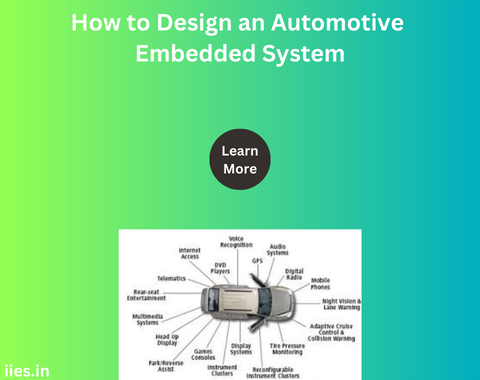
The rapid evolution of the automotive industry has led to the increasing integration of embedded systems within vehicles, transforming them into complex, intelligent machines. Designing an automotive embedded system requires a deep understanding of both hardware and software, as well as the unique challenges and requirements of the automotive environment. This article explores the essential considerations and principles that guide the design of these critical systems.
The automotive environment is characterized by extreme conditions such as temperature fluctuations, vibrations, and electromagnetic interference. Embedded systems in vehicles must be designed to operate reliably in these harsh conditions. Additionally, safety is a paramount concern, requiring the system to meet stringent automotive safety standards such as ISO 26262.
The first step in designing an automotive embedded system is to clearly define the system’s requirements. This involves understanding the specific functionality the system must perform, such as controlling an engine, managing a braking system, or monitoring tire pressure. The requirements should include performance metrics, safety standards, power consumption, and cost constraints.
Choosing the right hardware is crucial for the success of the embedded system. The hardware components must be robust enough to handle the environmental stresses and meet the performance requirements. Key considerations include the selection of microcontrollers or microprocessors, sensors, actuators, and communication interfaces. For automotive applications, the hardware should support real-time processing, be power-efficient, and have a long lifecycle.
The software architecture is the backbone of an automotive embedded system. It must be designed to ensure reliability, scalability, and maintainability. The architecture should be modular, allowing for easy updates and integration of new features. Real-time operating systems (RTOS) are often used in automotive applications to manage time-critical tasks and ensure deterministic behavior.
Automotive embedded systems rely heavily on communication between various electronic control units (ECUs). Protocols like CAN (Controller Area Network), LIN (Local Interconnect Network), and FlexRay are commonly used in automotive applications. The choice of communication protocol depends on the speed, reliability, and cost requirements of the system. Implementing these protocols correctly is essential to ensure seamless communication and data exchange within the vehicle.
Safety and security are non-negotiable aspects of automotive embedded system design. Functional safety involves identifying potential hazards and implementing measures to mitigate risks. This includes the use of fault-tolerant architectures, redundancy, and fail-safe mechanisms. Security, on the other hand, focuses on protecting the system from cyber threats. Encryption, secure boot, and intrusion detection systems are some of the techniques used to enhance security.
Rigorous testing and validation are critical to ensure that the embedded system meets all requirements and performs reliably under all conditions. This involves unit testing, integration testing, and system-level testing. Simulations and hardware-in-the-loop (HIL) testing are commonly used to validate the system’s behavior in a controlled environment before deploying it in a vehicle.
Automotive embedded systems must comply with industry standards and regulations. ISO 26262 is the most widely recognized standard for automotive functional safety. Compliance ensures that the system has been designed with safety in mind and has undergone thorough testing and validation. Other relevant standards include AUTOSAR (Automotive Open System Architecture) for software development and OBD-II (On-Board Diagnostics) for emission control.
Power management is a key consideration in automotive embedded system design, particularly with the increasing adoption of electric vehicles (EVs) and hybrid electric vehicles (HEVs). The system must be designed to minimize power consumption while maintaining optimal performance. Techniques such as dynamic voltage and frequency scaling (DVFS) and power gating can be used to improve power efficiency.
The automotive industry is rapidly evolving, with emerging technologies such as autonomous driving, advanced driver assistance systems (ADAS), and vehicle-to-everything (V2X) communication shaping the future of embedded systems. Designers must stay abreast of these trends and be prepared to integrate new technologies into their systems.
Designing an automotive embedded system is a complex task that requires a multidisciplinary approach. Engineers must balance performance, safety, security, and cost while navigating the challenges of the automotive environment. By following best practices and staying informed about industry trends, designers can create reliable, efficient, and future-ready automotive embedded systems.
Indian Institute of Embedded Systems – IIES